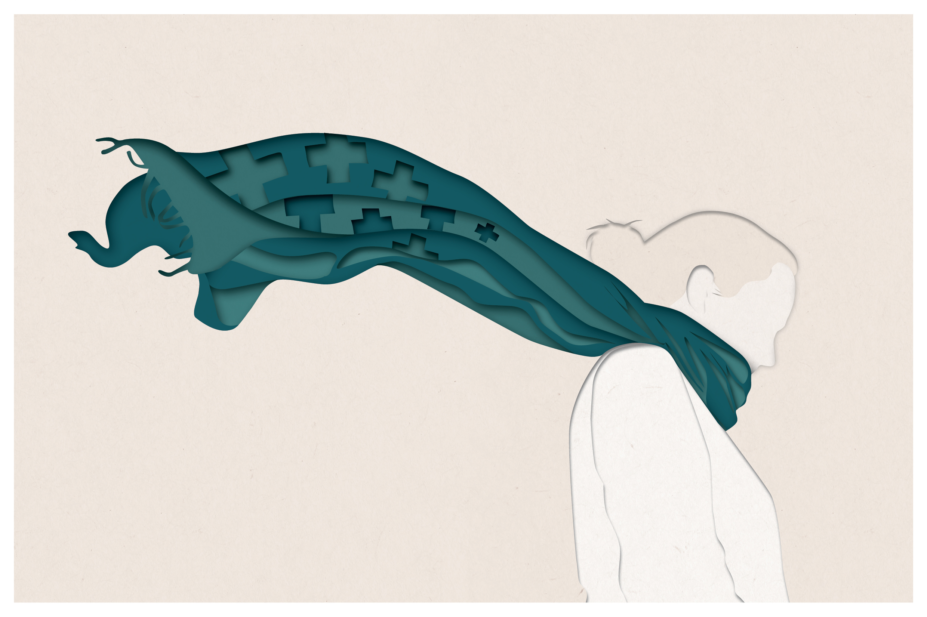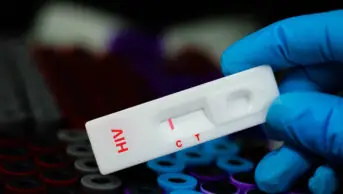
JL / Shutterstock.com
As the days become shorter and the temperature falls, we begin to spend more time inside. With this behaviour change, the frequency of seasonal viral infections, such as cold and flu, increases. Cold and flu share some symptoms and, if managed quickly and effectively, are often self-limiting and resolve completely within a couple of weeks.
Many people will visit pharmacies to seek advice on how best to manage their cold and flu symptoms and, therefore, this encounter is an essential opportunity for pharmacists to fulfil their role as antimicrobial stewards and discourage antibiotic-seeking behaviours.
With tens of thousands of cold and flu consultations taking place in community pharmacies each day, it is not surprising that there is wide variation in practice across the country. This inconsistency could be the result of differences in what patients expect from community pharmacy, caused by receiving conflicting education and messaging from pharmacy and other healthcare professionals.
As a result, The Pharmaceutical Journal partnered with GSK to create an independent editorial campaign, which aims to identify and meet the needs of both patients and pharmacy team members within a community pharmacy setting and encourage better self-management of cold and flu symptoms.
As a first step, we surveyed members of the Royal Pharmaceutical Society — our readers — to identify the baseline knowledge and understanding of the pharmacological and non-pharmacological treatment options, and the main public health and self-care messages that are central to cold and flu consultations.
Of the 371 community pharmacists who responded, 34% reported that between six and ten patients present to community pharmacies each day during the cold and flu season to seek advice or to purchase an over-the-counter product to help relieve their symptoms.
We have outlined a five-stage approach to cold and flu consultations, whether patients are seeking advice or self-selecting a product
The Pharmaceutical Journal presented the survey results to a panel of experts from across pharmacy, including representatives from large multiples and independents, community pharmacists, a pharmacy academic, a pharmacy technician, a pharmacy student and a preregistration trainee to determine what pharmacy teams were already doing well, what could be improved and how pharmacy teams should work together to improve cold and flu management (see ‘Community pharmacy ‘must provide consistent care’ for cold and flu’).
A range of pharmacological options are available through pharmacy to support patients with cold and flu symptom management. However, the patient often requires guidance from the pharmacy team on how best to self-care, and on infection prevention and control.
There was a broad consensus among the panel members that the basics are being done well across the sector, but a consistent, achievable approach to cold and flu consultations for the whole pharmacy team is required. This will lead to focused conversations about self-care that truly demonstrate the value of community pharmacy to patients (see ‘Cold and flu: we need a sector-wide standard for helping patients to self care’.
By engaging with and empowering patients to self-care for the symptoms of cold and flu, pharmacy teams can seize the opportunity to discuss antimicrobial stewardship and align the sector with public health messaging related to the antimicrobial stewardship role of community pharmacy (e.g. infection control and discouraging the inappropriate prescribing and requests for antibiotics). (See ‘Providing self-care advice for cold and flu keeps antibiotics working’)
The training and implementation materials produced in the subsequent parts of this campaign will help pharmacists bridge the gap between the pharmacy team and patients to ensure that a consistent level of care is provided across the sector. We have outlined a five-stage approach to consultations that is achievable across multiples and independents (see ‘Making consultations in community pharmacy matter’), as well as its practical application in the context of cold and flu consultations, whether patients are seeking advice or after self-selecting a product (see ‘Engaging patients with cold and flu: putting theory into practice’).
All pharmacies should support the pharmacy team to adopt this consultation approach. It outlines how pharmacists should implement a successful training programme for cold and flu (see ‘Implementing a cold and flu training programme in the community pharmacy’) and provides supporting materials that can help facilitate the role of a trainer.
With the development of primary care networks, as well as the ever increasing number of referrals to community pharmacy through the NHS Urgent Medicine Supply Advanced Supply Service and the Digital Minor Illness Service, more people are visiting their pharmacy than ever before. Patients will consider what community pharmacy teams can do for them when deciding on which healthcare professional to consult. A community pharmacy sector working with a consistent, unified approach can meet its patient’s requirements, providing relief to a strained healthcare system and taking opportunities to demonstrate its value ‘head on’.
Citation:
The Pharmaceutical Journal, September 2019. doi: 10.1211/PJ.2019.20207009


